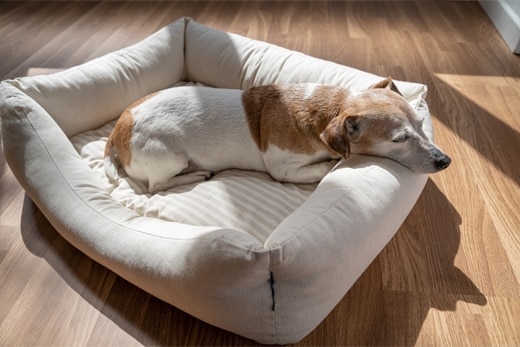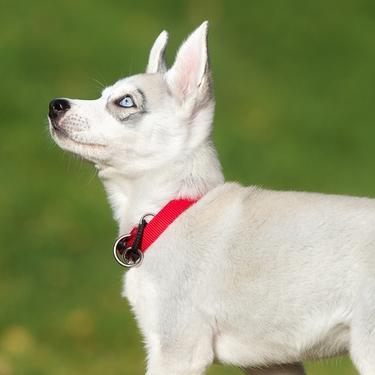
-
Find the right food for your petTake this quiz to see which food may be the best for your furry friend.Find the right food for your petTake this quiz to see which food may be the best for your furry friend.Featured products
 Adult Chicken & Barley Recipe Dog Food
Adult Chicken & Barley Recipe Dog FoodSupports lean muscle and beautiful coat for adult dogs
Shop Now Hill's Science Diet Adult Chicken & Beef Entrée Dog Food
Hill's Science Diet Adult Chicken & Beef Entrée Dog FoodChicken & Beef Entrée in a delicious loaf with complete & balanced nutrition to help keep adult dogs active and healthy
Shop Now Adult Large Breed Chicken & Barley Recipe Dog Food
Adult Large Breed Chicken & Barley Recipe Dog FoodSupports healthy joints, lean muscle, and beautiful coat for large breed dogs
Shop NowFeatured products Senior Vitality Adult 7+ Tuna & Vegetables Stew
Senior Vitality Adult 7+ Tuna & Vegetables StewImproves Everyday Ability to Get Up & Go
Shop Now Adult 7+ Indoor Chicken Recipe Cat Food
Adult 7+ Indoor Chicken Recipe Cat FoodSupports energy level and beautiful fur in mature indoor cats
Shop Now Adult Turkey & Liver Entrée Cat Food
Adult Turkey & Liver Entrée Cat FoodPrecisely balanced nutrition with the delicious taste of minced turkey & liver to help fuel the energy needs of cats during the prime of their life
Shop Now -
Dog
- Dog Tips & Articles
-
Health Category
- Weight
- Food & Environmental Sensitivities
- Urinary
- Digestive
- Joint
- Kidney
-
Life Stage
- Puppy Nutrition
- Adult Nutrition
- Senior Nutrition
Cat- Cat Tips & Articles
-
Health Category
- Weight
- Skin & Food Sensitivities
- Urinary
- Digestive
- Kidney
-
Life Stage
- Kitten Nutrition
- Adult Nutrition
Featured articles The Science Behind Our Love for Pets
The Science Behind Our Love for PetsLearn the scientific reasons why we have such strong connections with our pets, and what science says about the love between humans and our furry friends.
Read More What Is Littermate Syndrome? Pet Adoption Guide
What Is Littermate Syndrome? Pet Adoption GuideLearn more about littermate syndrome in dogs and cats and how to successfully navigate adoption and early socialization processes.
Read More How to Properly Mix Wet & Dry Pet Foods
How to Properly Mix Wet & Dry Pet FoodsAn Orange cat eating from a bowl filled with mixed food
Read More -


Your pet adds comfort, character and joy to your home — and they also add hair. It's a small price to pay for unconditional love, but shedding can be frustrating to deal with. Here's what you should know about shedding season for dogs and cats, how to recognize when shedding is a bigger concern and how to minimize excess pet hair in your home so you can focus on the good stuff.
Why Do Dogs and Cats Shed?
Shedding is an important aspect of skin and hair health for dogs and cats. Pets shed to remove dead and damaged hair, regulate their body temperature and release natural oils in the skin. All pets shed to some extent, but genetics determine coat type, hair length, growth cycle and shedding amount.

When Do Dogs and Cats Shed?
Shedding is a normal part of your pet's hair growth cycle, and it happens year-round. The American Animal Hospital Association (AAHA) explains that this cycle traditionally includes three phases:
- Anagen: An active growth phase where hair grows to its genetically determined length.
- Catagen: A transitional phase between anagen and telogen where hair ceases growth.
- Telogen: A resting phase where hair remains in the follicle until it falls out.
Some veterinary dermatologists add a fourth phase, exogen, to describe the active shedding phase.
How long each of these phases lasts depends on several factors, including time of year, overall health and breed (genetics). For example, the AAHA explains that poodles and shih tzus can remain in the anagen phase for several years, growing long hair that requires trimming. Other breeds have a short anagen phase followed by a long telogen phase.
Seasonal Shedding
Most dogs and cats shed continuously throughout the year. However, seasonal shedding refers to periods of heavier or more frequent shedding due to changing weather and light patterns, and it primarily affects pets with longer hair or thicker coats. Seasonal shedding typically peaks in the spring and fall. Spring shedding thins out your pet's coat in preparation for warmer weather, while fall shedding makes room for them to grow a heavier winter coat.
Seasonal dog shedding is usually heaviest in the spring, particularly in dogs with double coats such as Siberian huskies, German shepherds and Labrador retrievers. Some veterinarians refer to these periods of heavy shedding as "coat blows." Your pet "blows their coat" when their undercoat comes out in large clumps in preparation for summer. You may also observe heavy seasonal shedding in cats with denser coats, including Russian blues, Maine Coons and Ragdolls.
Since shedding season is prompted by light and temperature changes, the amount of time your pet spends indoors with artificial lighting and in temperature-controlled environments can affect when and how much they shed.
Abnormal Shedding
Heavier periods of shedding unrelated to seasonal shedding can indicate an underlying health concern or condition. The AAHA lists the following possible causes:
- Stress
- Immune system disorders
- Poor nutrition
- Skin infections
- Allergies (food or environmental)
- External parasites
- Pregnancy or lactation
If you notice your pet is inexplicably shedding more — particularly if it's paired with bald patches, excessive scratching or any other abnormal behaviors — make an appointment with your vet.


Tasty Tips
Young pets may need several visits in their first year for vaccinations. Adult pets generally benefit from annual check-ups, while senior or special-needs pets might require more frequent visits.
How Can You Manage Shedding Season for Cats and Dogs?
Shedding is natural and healthy, and there's nothing you can do to stop it. However, you can take steps to prevent pet hair from building up in your home.
Groom Your Pets
Regular grooming, including bathing and brushing, is the best way to keep shedding under control and help remove dead hair. For seasonal dog shedding, use a brush or comb made specifically for stripping dead hair from your pup's undercoat. If you have a cat, use a brush designed for cats (rather than a generic pet brush) to more effectively capture dead and damaged hair. While you're at it, this is the perfect opportunity to examine your pet's skin and hair for any changes.
Provide Balanced Nutrition
Feed your dog or cat a complete and balanced food that's appropriate for their life stage. Some foods are even formulated to promote healthy skin and hair. When in doubt, ask your vet for their recommendation based on your pet's unique needs.
Try Fabric Conditioner Designed for Pet Parents
Regular laundry detergent doesn't always do the trick for pet-lover homes. Consider adding a fabric conditioner designed to repel pet hair to your usual laundry routine to fight fur and help keep your clothes, home and bedding fresh.
Vacuum and Sweep Regularly
Vacuum furniture, rugs and carpets at least once a week, or cover chairs and sofas with machine-washable slipcovers or throws. If you have more than one furry pet, you might want to consider investing in a vacuum cleaner designed especially for tackling pet hair.
Sweep hardwood floors with a microfiber sweeper that uses static electricity to attract and trap hair and dander, or use a broom made for sweeping up pet hair.

Rotate Pet Bedding and Blankets
Pet bedding — including removable, machine-washable pet bed covers and designated pet blankets — can quickly get dirty. Regularly wash and rotate these items to prevent hair buildup and odors, ideally once a week. Consider keeping a couple of sets of bedding and blankets on hand so you can launder one set while keeping the other in use.
Avoid washing these items with your regular clothing to prevent hair and odor transfer.
Use a Lint Roller or Fabric Brush
Keep lint rollers and fabric brushes handy to remove pet hair from clothing and surfaces where your vacuum can't reach.
Furry Friends for Life
As with most areas of life, knowledge is power when it comes to pet parenthood. If you have a seasonal shedder at home, you can prepare ahead of time with regular grooming to reduce the amount of hair accumulation in your home. And if you notice your cat or dog is shedding an abnormal amount outside of shedding season, you'll know to consult your vet for expert advice. At the end of the day, dealing with excess hair can be bothersome, but it's a minor annoyance compared to the love and joy your pet brings.


Dr. Sarah Wooten graduated from UC Davis School of Veterinary Medicine in 2002. A member of the American Society of Veterinary Journalists, Dr. Wooten divides her professional time between small animal practice in Greeley, Colorado, public speaking on associate issues, leadership, and client communication, and writing. She enjoys camping with her family, skiing, SCUBA, and participating in triathlons.
Related products

Chicken & Barley Entrée in a delicious loaf with great taste and precisely balanced nutrition to support 5 essential building blocks for lifelong health

Supports lean muscle and beautiful coat for adult dogs

Supports healthy joints, lean muscle, and beautiful coat for large breed dogs

Chicken & Beef Entrée in a delicious loaf with complete & balanced nutrition to help keep adult dogs active and healthy
Related articles

Understanding how to train puppies and kittens starts with understanding their differences. Discover tips for training success for puppies vs. kittens.

Learn more about littermate syndrome in dogs and cats and how to successfully navigate adoption and early socialization processes.

An Orange cat eating from a bowl filled with mixed food

Learn the scientific reasons why we have such strong connections with our pets, and what science says about the love between humans and our furry friends.

Put your pet on a diet without them knowing
Our low calorie formula helps you control your pet's weight. It's packed with high-quality protein for building lean muscles, and made with purposeful ingredients for a flavorful, nutritious meal. Clinically proven antioxidants, Vitamin C+E, help promote a healthy immune system.
Put your pet on a diet without them knowing
Our low calorie formula helps you control your pet's weight. It's packed with high-quality protein for building lean muscles, and made with purposeful ingredients for a flavorful, nutritious meal. Clinically proven antioxidants, Vitamin C+E, help promote a healthy immune system.

